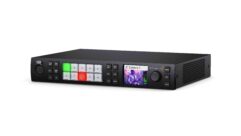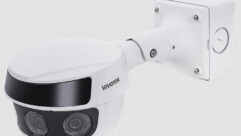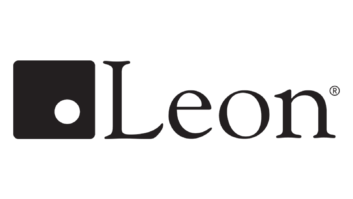
Picture This: Tapping the Trend
Jun 1, 2008 12:00 PM,
By Jeff Sauer
The professional AV industry is poised to take advantage of streaming video.

Thanks to YouTube driving the streaming video boom and forcing the hand of other content owners, it’s clear that computer users from a broad spectrum have become accustomed to this medium, sparking opportunities in the professional AV industry.
What does YouTube mean to the professional AV industry? Well, probably nothing directly. Yet during the last couple of years, the success of streaming video on the Web has had a marked impact on how comfortable the general public has become with online digital video content. And that affects how computer users will view this relatively new form of information.
It’s not just YouTube, of course — although YouTube’s singular success has clearly reached a very broad spectrum of computer users. Cable news websites now regularly stream short news segments, as do network news stations. Many television station websites now regularly stream proprietary content, including everything from local news to full episodes of national network primetime content. Whether or not YouTube deserves all of the credit for driving this streaming video boom and forcing the hand of other content owners, it is clear that streaming video is now a mainstream technology.
Of course, if you’ve spent any time at all on YouTube, it goes without saying that there’s a lot of irrelevant, juvenile, and outright garbage content. But there’s also content that is well worth seeing, whether it is for informational, cultural, or recreational purposes. But that is not what matters. The YouTube-era revelation is that regular, non-technical computer users have now become accustomed to watching digital video on the Web, and that extends far past video-sharing sites. It’s an opportunity for the professional AV industry to take advantage of the new trend.

Among the family of products VBrick Systems has designed for remote or traveling creation of media streams is the VBxStream portable video system, which allows emergency units or news crews to broadcast media streams via a satellite uplink or even a cell phone.
Digital video and streaming video have been around for a long time, but what has changed since I started followed streaming video more than a decade ago is the nature of the discussion. For much of that time, the issues centered around the technology: the compression formats, the encoders, the decoders, and whether CPUs alone had the processing power without hardware assistance, multicasting and edge-serving to minimize demands on infrastructure, and the balance between picture quality and low enough bandwidth requirements, etc. Many of those were exciting discussions typical of pioneering days, but history is littered with great technologies in search of a problem to solve.
It’s only recently — most overtly with the success of YouTube — that streaming video has gone from being a cool technology for the few to a solution that is reaching viewers in large numbers. Concerns about image quality, while still justified given the heavy compression necessary, are no longer paramount issues. The marketplace has by its action decided that the user experience is good enough and that the desire for content outweighs any recognizable quality limitations. The questions now are more about how to leverage this new way of reaching the public, what content is desirable in the on-demand viewing era, and what is the business model for deploying the technology.
Picture This: Tapping the Trend
Jun 1, 2008 12:00 PM,
By Jeff Sauer
The professional AV industry is poised to take advantage of streaming video.
AV STREAMING
There are already several companies in the professional AV industry — none strangers to InfoComm — that have been banging the digital video drum for several years. VBrick Systems, Accordent, Sonic Foundry, and Advanced Media Design are good examples of companies returning as InfoComm exhibitors. And all offer solutions that manage audiovisual assets.
VBrick introduced the first video bricks about a decade ago. They are simple-looking black-box devices that take analog video (and audio) in and convert it to IP data. As IP data, that media can be sent over the Internet or a corporate Intranet to another video brick somewhere else in the building or in the world, where it will then be converted back to analog video for display on a monitor. VBrick’s early bricks were MPEG-1-based. The company now offers MPEG-2, MPEG-4, and Windows Media bricks for both higher-quality and lower-bandwidth situations.
VBrick found early success in markets such as distance education, government and military installations, as well as in the corporate world. Yet they were usually environments that had a clear need for distributing video already, or at least a vision of what was necessary. Common examples include geographically disparate educational institutions needing a way for students in a remote city or town to view a lecturer somewhere else, military bases needing live visuals from remote training exercises, or companies with multiple facilities to collaborate visually.
In order to move beyond those existing remote video needs, VBrick has built a variety of applications that use the bricks as the engine for generating video content and managing it in a manner that yields future access across an organization. For example, VBCast is family of products designed for remote or traveling creation of media streams, including VBxStream — which has the capacity for emergency units or news crews to broadcast media streams via a satellite uplink or even a cell phone. VBCast is also designed for live or archival streaming of onsite presentations. Or, more to the point of expanding the market of potential users, the new VBOSS (VBrick Online Streaming Service) bundles all of the equipment and services to afford an almost instant Internet-streaming presence.
VBPresenter is an application that links the captured live video of the presenter with the presentation slides being used by the presenter, recognizing and adjusting for the inevitable latency between the two so the viewer sees no synchronization problems. What’s more, VBPresenter — in conjunction with a video-generating VBrick — is able to stream the synchronized presentation with video out over the Internet. It can also manage questions and polls from live online viewers.

Accordent Capture Station from Accordent Technologies is a hardware and software turnkey system that records synchronized audio and video with computer-based presentation materials for live webcast streaming or achival storage.
It’s VBrick EthernetTV that brings it all together as an infrastructure of hardware and software pieces that allow an organization to repurpose audiovisual content — whether that means training sessions, lectures, presentations, promotional material, or something else. EthernetTV provides a repository for digital media, a web-based archival and retrieval interface, a scheduling application to create broadcast or on-demand viewing, and all the hardware needed to ingest media.
Accordent Technologies focuses more directly on the creation and management of business and educational presentations. The Accordent Capture Station is a hardware and software turnkey system that records synchronized audio and video with computer-based presentation materials for live webcast streaming or archival storage. Accordent PresenterPlus affords the ability to edit, rearrange, reduce, augment, and create chapter and bookmarks within recorded presentations for future viewing.
Accordent Media Management System is an enterprise-oriented, scalable application that works in conjunction with the Capture Station to manage media content. Similar to Vbrick’s EthernetTV, the Media Management System creates a web or Intranet portal for accessing and viewing media assets, but it adds rich security features and includes authentication and tracking of views and viewers, generating reports about views, interaction during viewing (skipped or repeated segments, etc.), and peak viewing times.
Sonic Foundry is the maker of MediaSite, the pioneer in rich-media capture and webcasting. MediaSite recorders come in a few different flavors, but they are all essentially turnkey systems. Similar to VBPresenter and the Accordent Capture Station, MediaSite synchronizes live audio and video with presentation materials for live webcast, podcast, or storage. MediaSite has a full array of online meeting features, including question-and-answer options, audience polling, and viewer statistics.
MediaSite LX and EX Servers are Sonic Foundry’s enterprise-class media management systems that provide web-based administrative control and viewer access to a database on rich-media assets with secure viewing access, viewer monitoring, on-demand or schedule webcasting, as well as network monitoring features to ensure network health.
Advanced Media Design (AMD) began with a much different approach to acquiring content by leveraging a similar opportunity to have content available on demand for review. AMD MediaPointe appliances, also black-box devices, were initially designed to record videoconferencing calls to a server for archival storage and subsequent review. Different models and configurations afford different recording options, including the number of simultaneous streams that can be recorded and whether those streams are videoconferencing audio and video, peripheral presentation material, or any combination of the two. MediaPointe offers one-button simplicity for recording and web-based access from authorized desktops.
MediaPointe also brings one-touch simplicity to recording lectures, meetings, training, or other presentations. It offers live streaming of events with a series of Digital Network Streamer servers, as well as multiple levels of media management for repurposing created content.
Admittedly, recorded business presentations — even when they include video and audio of the presenter synchronized with presentations slides — might not have the panache of some of the broader culture content on YouTube. But that doesn’t really matter, as long as they bear content that will help educate, train, or communicate information across organizations.
Indeed, much of the broad appeal of YouTube is that individual pieces of content don’t necessarily garner broad interest at all, but rather share video content from one interested party to another. It’s that mode of computer viewing that these professional AV companies are now able to tap into. Getting people to change habits is a lot less of an issue. They’re already used to opening a browser or web player and watching. Now it’s up to our community to give them valuable content to watch during productive hours.










